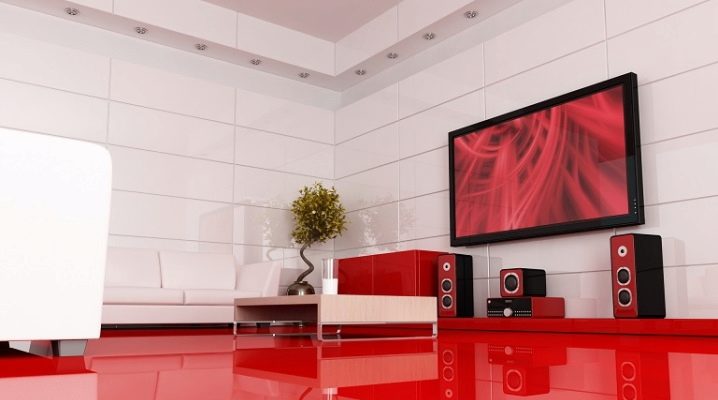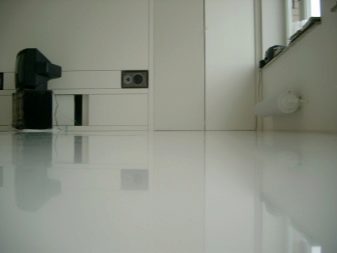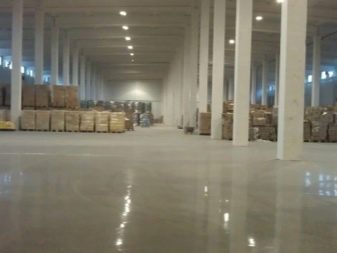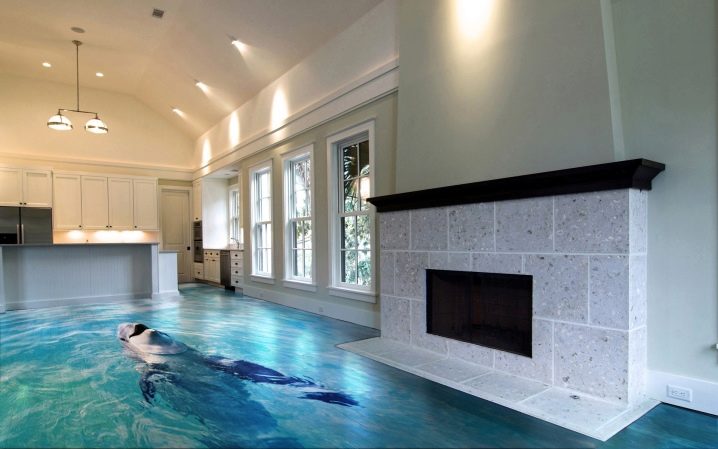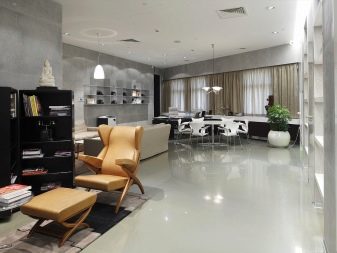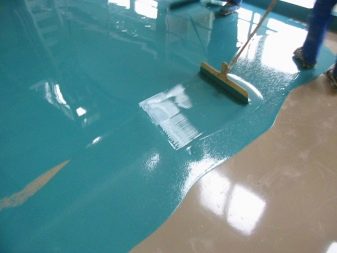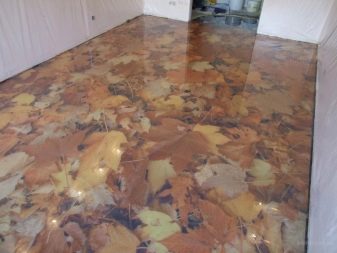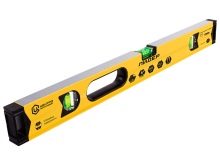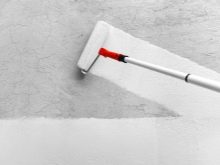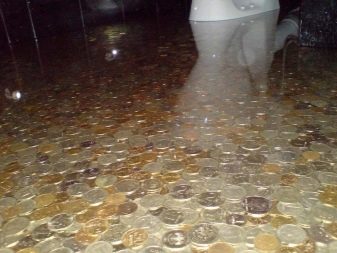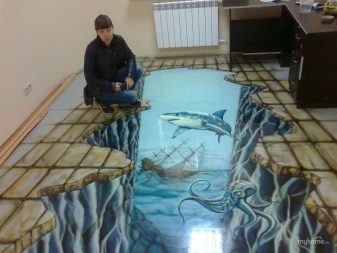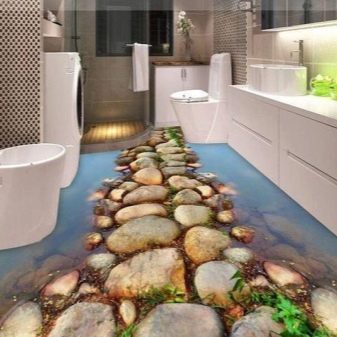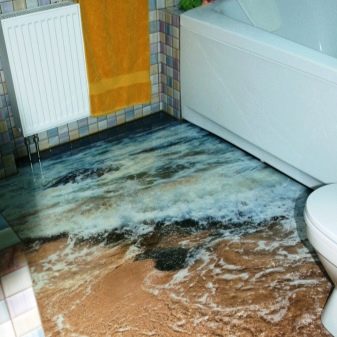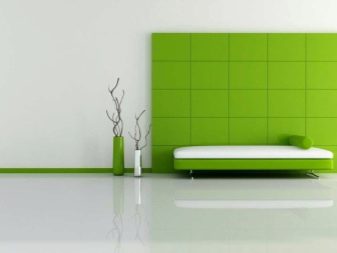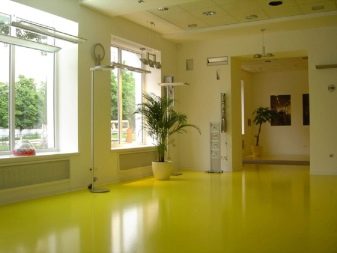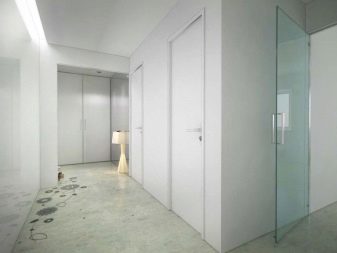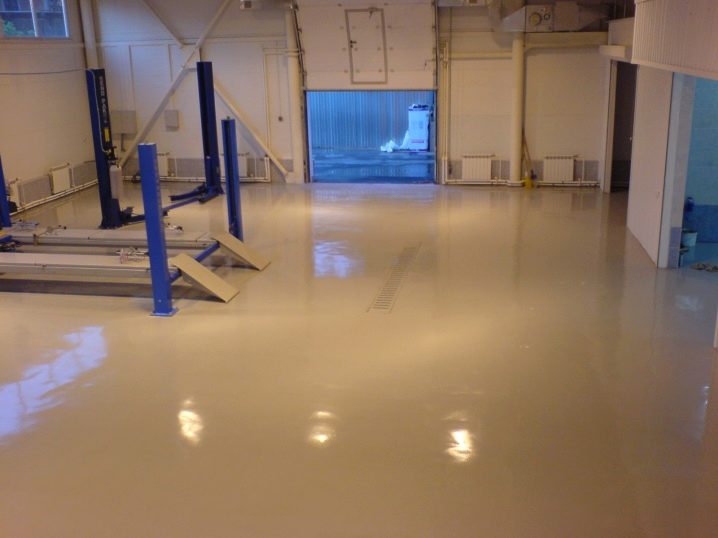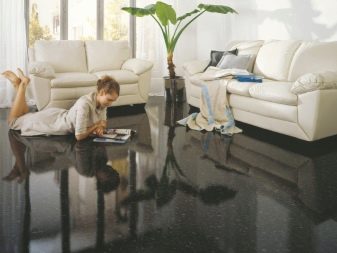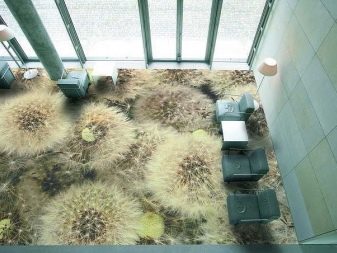The minimum and maximum thickness of the self-leveling floor
Self-leveling floors are dry mixes that, in the finished state, are capable of self-leveling under the influence of the laws of physics. They have a polymer and mineral base. Which self-leveling floor to buy depends on what results you expect.
Species
Do not confuse the screed and self-leveling floor on the ability to quickly harden. These are fundamentally different materials.
Commercially available bulk floors under a tile distinguish by various criteria.
If we qualify them for a binder, we get the following types:
- Cement. They are used exclusively for leveling the surface, but further processing, such as grinding and the use of other techniques, has a surprisingly interesting decorative effect.Ideal for rooms with high humidity.
- Gypsum. A great option for heated floors. Moreover, the material does not shrink, and it is convenient to work with it.
- Cement-gypsum. Combine the advantages of the first two types of floors.
Features and benefits
At one time, high-quality self-leveling floor became a real sensation in the construction business. The innovative discovery of self-leveling mixtures from manufacturers who were interested in creating a fundamentally new material was successful.
Some of its properties are truly unique and inaccessible to other types of floor formation:
- Create a seamless surface that eliminates the appearance of irregularities and cracks, where harmful microorganisms can accumulate. After processing, the self-leveling floor does not let moisture in, it is easy to care for. All this together leads to the fact that buying a self-leveling mixture will lead to further savings.
- Resistant to chemicals and high temperatures, even fire.
- Ability to withstand low temperatures.
- Compatibility with new technologies, in particular with the “warm floor” system.
- Long operational period (up to 40 years).
- Can be an excellent basis for unique decoration.
- Universality for various objects.
- The development of a self-leveling floor is designed in such a way that it is able to smooth out the natural unevenness of concrete and other surfaces.
A pleasant bonus for buyers will be the low price of the self-leveling floor from leading domestic and European brands.
How to make a self-leveling floor?
First you need to prepare materials and tools for self-installation of self-leveling floor.
Materials:
- soil impregnation;
- base;
- the finish.
Instruments:
- building level;
- capacity for dilution of solutions (usually a bucket);
- drill with mixer nozzle for mixing components;
- priming roller;
- rake for leveling mortar;
- spiked roller to eliminate air bubbles;
- construction level is necessary if the concrete-sand screed has significant drops over the entire plane. Therefore, it is recommended to make the most even surface, for economical use of the base layer.
Phased progress
Preparation of concrete screed (primer):
- carry out cleaning the surface of the screed before applying a primer coating;
- apply the soil evenly with a roller to complete saturation of the screed, but not waiting until the impregnation forms a lacquer film.
Preparation of the level of the mass (base coating in the system of self-leveling floor) of a three-component mixture:
- for 3-5 minutes with a mixer, mix component A and component B;
- after complete mixing of these components, continuously pour component B, continuing with the construction mixer to mix until a homogeneous state of the solution;
- the finished mixture is applied at a temperature of at least 15 ° C, but not longer than 30 minutes from the moment of complete mixing of component B;
- the three-component composition is uniformly poured and smoothed with a squeegee over the entire surface to a thickness of 2-3 mm;
- after laying the mixture, the air bubbles are removed with a studded roller.
Finishing the self-leveling floor with a finishing coating:
- first, to prepare component A, it is well mixed to raise the filler and color pigment;
- while continuing to mix component A, component B (hardener) is gradually introduced;
- It is recommended to apply the mixture at a temperature from +5 to the primed surface,Gradually leveling with a roller or notched trowel.
You can walk after 24 hours, complete drying - 5-7 days.
Thickness of a bulk floor
This floor covering can be divided into special types by the thickness of its coating:
- If the thickness of the flooring is less than 1 mm, then it is a thin-layer mixture.
- If the layer is from 1 mm to 5 mm, then these are medium-layer mixtures.
- If the thickness of the floor covering up to 8 mm - this is a highly filled coating.
For industrial premises use mixtures that are applied in a thin layer. The load on the floor in this case should be small. This must be taken into account. Also thin-layer blends help solve various design ideas. The lack of a small layer of flooring - fast erasure.
The best characteristics has an average floor thickness. This material is used in rooms that provide for mechanical loads of average size. But still they should not be maximized. The main advantage - efficiency and durability to wear. The average thickness of this flooring is excellent for any kind of repair.
Service life is quite high.Suitable residential premises. You have the opportunity to choose between matte and glossy surface. It is necessary to take into account your preferences and the overall interior of the room.
A self-leveling floor with a high filling level is required in rooms that can withstand high mechanical loads.
Flooring can withstand shock loads. Most often, this type of flooring is used in industrial premises. It is not recommended to use it in a house or apartment. Transfer any abrasive loads.
Maximum
Bulk floors with a maximum thickness are mainly used in warehouses or various industrial plants. They withstand considerable mechanical loads and vibrations. Temperature extremes are also not terrible for them.
For such a flooring mixtures are used, which are composed of methyl methacrylate resins. This is the most durable material. This floor dries at least two hours. Maintainability at the highest level.
The maximum thickness of a quality-made self-leveling floor can withstand heavy loads, even more than 15 tons. Low temperatures, he is also not afraid.The thickness of the layer must be at least 4 mm.
If you need a floor covering that can withstand maximum loads, then you need to apply acrylic-cement mixtures. Actual for wet production. 10 mm - the minimum thickness of the floor covering. The maximum layer thickness is 20 mm. The coating can withstand exposure to chemicals. The advantage is its durability.
If you need a floor covering that can withstand super-low temperatures, then use blends that include methyl methacrylic resins. The thickness of the layer must be at least 7 mm. But it should not be more than 10 mm. It is applied in refrigerators.
Small
When creating a self-leveling floor, it is important to consider every millimeter. This is an extremely strict rule. For residential premises will be enough layer of one millimeter. The smaller the flooring layer, the greater your savings. The work on its creation is better to trust professionals. They will help you save on mixtures, and thus their work will pay off.
Self-leveling floors - this is a dry mixture, which is diluted with water and poured a layer of from 3 mm to 5 cm maximum.Cement-based bulk floor can be laid from 5 to 30 mm per layer or with a thin-layer strip. Cement self-leveling floors can be thinner, but gypsum floors - only from 20 mm. Self-leveling gypsum floors are used only indoors, and on the basis of cement - both inside and outside.
Polyurethane is a heavy-duty material, but for a residential building its use is too expensive. It is best to produce such floors where high loads are assumed. Strengths are achieved by adding quartz sand, which is poured onto the coating while it is still not completely frozen.
Epoxy is in itself a very interesting material. In addition, today there is an epoxide with 98% transparency. This means that you can put shells, pebbles, and other decorative materials on the floor and fill them with a layer of epoxide. We get a very original floor. If you use this epoxide, for example, for a small bathroom, it will not be so expensive.
Polyurethane coatings are more suitable for arranging the territory outside, maximum on balconies, terraces, stairwells. It is leveled using a needle roller.
Previously, self-leveling floors were called finishing coatings made on the basis of polymeric materials - epoxy and polyurethane resins. About 3 years ago, this concept began to cover all the floors that can be poured, in particular, polymer-cement and concrete screeds.
To get a completely flat floor, care should be taken to ensure that the roughing screed is absolutely flat and made according to all the rules. For the draft concrete, the main requirement is that it should be even and have a peel strength of at least 1.5-2 MPa. The strength of the concrete floor should be at least 25 MPa for small and medium loads, and 30-35 MPa - for medium and large loads.
Floating self-leveling floor of expanded clay or, when using expanded polystyrene, f must be made by professionals. In this way, its optimum thickness will be obtained.
Important tips and some nuances can be found in the following video.
